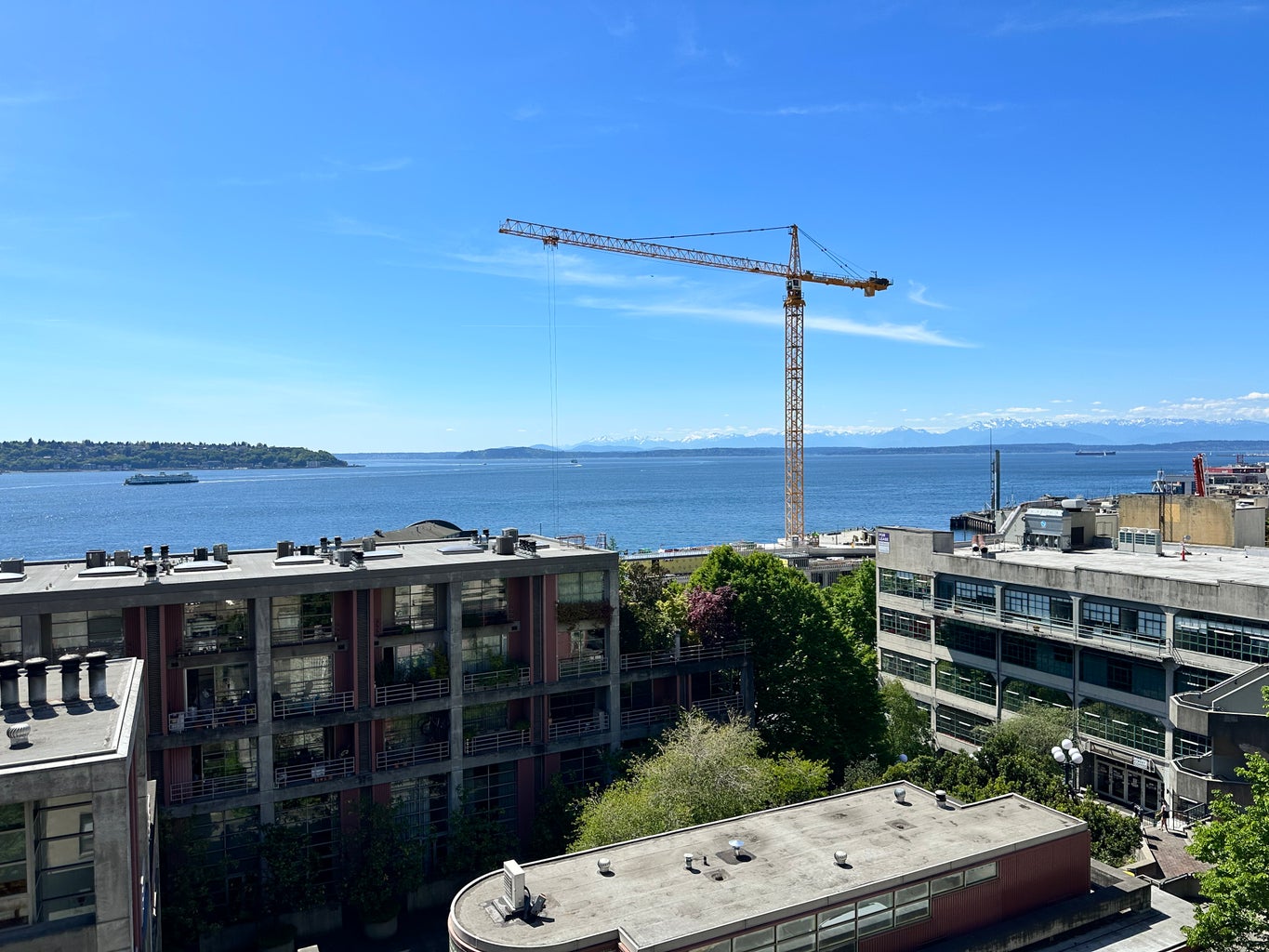Isn’t it always funny how you end up in the places you least expect?
In November 2019, two of my new college friends and I, looking to explore anything and everything Seattle had to offer, excitedly took the Link Light Rail downtown to what is, quite arguably, the city’s most loved attraction. After buying a bouquet of perfectly curated dried flowers, I handed my phone to my friends and insisted they snap a cliché picture of me beaming under the “Public Market Center” clock sign, a classic PNW staple. I had been to Pike Place Market before as a kid, growing up close yet far enough to the waterfront to feel like a tourist in my nearest city. Still, even on a cold and rainy day that our lovely city tends to perfect, exploring the Market for the first time as an adult was foreshadowing what I could fully make of my college experience.
And then a quick 3.5 years later, in March 2023, I was left with the looming realization (and fear) that I needed to find a job soon to put my four hard years of work at university to appropriate use. So I, as many seniors do, scavenged every possible job board day and night, later to find a “Food Access Internship” with the Pike Place Market Foundation, seemingly promising me not only a chance to learn about working in public health with a community component, but also in, of course, an environment that sells out postcards on every Seattle city block. Although applying on a whim, and feeling vastly underprepared for the experience, after three interviews, I was thankfully in for the spring for an opportunity that checked all of my possible boxes. People-oriented? Check. Unique and one-of-a-kind? Undoubtedly. Spending time outside in potentially glorious weather? Immediately yes. And so, as my first taste of a specific field in my major—nutrition within public health—even if I walked away from the ten weeks uninspired to pursue similar work after post-grad any further, I knew that the experience would be rewarding nonetheless.
On my first day, after finding the small yet homey Foundation office in a nook on Western Avenue, beneath the famed Rachel the Pig and the first Starbucks attractions, I was taken on a tour. Not through the Market at all, actually, but the parts that were unknown and unfamiliar to me, the establishments around the Market that act as their own microcosm—the Pike Place Food Bank, Preschool, Senior Center, and more Foundation property. What became clear from the tour, or within the first hour of my entire internship, was that Pike Place is much more than the typical tourist-crafter relationship, but rather, it’s a family that, while it may be overlooked during a first stroll under the neon signs, is very much alive and thriving together, supporting each other, providing each other with the essential resources, friendships, and comfort that every person can benefit from.
With my rare blessing of not having any classes or campus obligations on Wednesdays, the middle of the week quickly became when I fulfill the majority of my internship duties. During these afternoons is when I help the Pike Place Market Preservation and Development Authority, or PDA, orchestrate their Community Supported Agriculture Program. For the annual Spring season, those who enroll in the CSA venture are given a bag of produce, referred to as a “half share,” containing four to five vegetables from nearby farmers that partner with Pike Place, ranging from the classic Washington-known favorites, like apples and onions, to the usually forgotten staples particularly suited to unique diets, like baby bok choy and microgreens. Enrollees also have the option to opt in for “meat share” or “flower share” add-ons, also coming from certain dedicated vendors in the Market, for an additional price. After the 250 or so bags are packed to down to the very last detail the day before, save a few extras up for grabs, participants pick up their bags on Wednesday evenings, along with a carefully crafted “fresh sheet” complete with information on the weekly farmers, nutrient facts of the produce, and savory recipes to try. Despite usually shying away from most social opportunities to stick to my introvert self, I now classify this part of the internship as a highlight of my week—as I’ve begun to recognize faces and names and stories, I’ve come to internalize that interacting with people is a meaningful part of not just public health work, but any job I may pursue in the aftermath of my first farmer’s market-type endeavor.

Fridays are of a calmer, nonchalant speed. After meandering further down Western and finding our way to the hidden Senior Center service elevator, we make our way up to the rooftop “Secret Garden.” A relatively new addition to Market property, hence the “Secret” part of the title still included, this top floor of the Market is complete with 20-some metal planting beds, then making it the other Food Access interns and I’s responsibility, with the guidance of our supervisor, to plant and harvest a variety of vegetables when the spontaneous heat spell hit in early May, eventually for the full donation to the Pike Place Food Bank downstairs. While planting a variety of vegetables and greens that matched the diversity of CSA produce—spinach, lettuce, Chinese cabbage, beans, and peas, to name a few—I quickly found I wasn’t the only one who became quickly interested on the mechanics and practicality of urban agriculture. A large part of my short hours in the garden are also largely dedicated to answering the bursting questions of tourists who meander off cruise ships and past the beautiful art vendors and craft shops. Despite people’s familiarity, or lack thereof, with growing their own food or tending to specific plant needs in general, the emotional consensus of these curious onlookers is always the same: people are intrigued, inspired, and filled with wonder about the Garden. They look at the beds and then to their friends or companions with an optimistic smile that says, “You know, we should do something like this.” And, truthfully, it never fails to make me smile too.
Above all and past the job requirements, back to my opening line, when I visited the Market as a college student for the first time (and an eager tourist enjoying a newfound freedom), I couldn’t tell you what I was thinking of doing with my life after walking in the cap and gown—but I confidently know it wasn’t this. But I’ve been so pleased and fulfilled by this experience, in fact, that around week 3 or 4 of the internship, about halfway through its duration, I decided I wouldn’t mind, or rather, I would thoroughly be happy, if this wasn’t the end of my time being fully immersed in the Market like this. Although the photo of young me under the Public Market sign was seemingly meaningless and silly at the time, I’ll hold onto it forever—it turns out it was a sign of the unexpected, yet exciting, possibility of what was to come for me in the unknown of my post-student, “fully adult,” life.
Check out more information on the Pike Place Market Foundation, where you can soon find their upcoming internship opportunities. Also, visit the Preservation and Development Authority website to learn more about the ins and outs of typical Market operations, or sign up for their summer CSA programs if you’d like an extra way to enjoy the Seattle sunny season.


